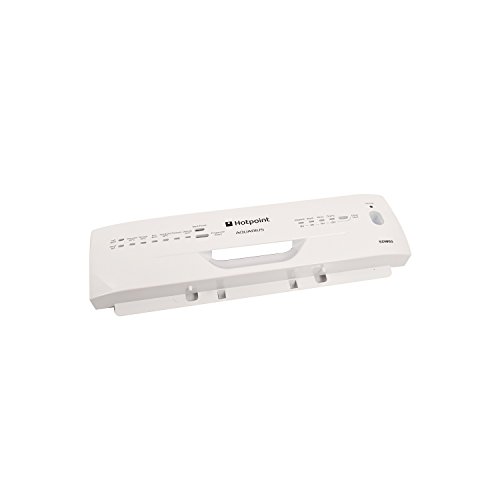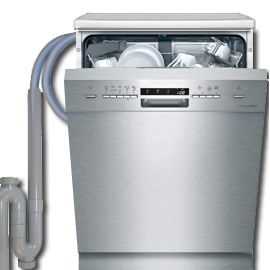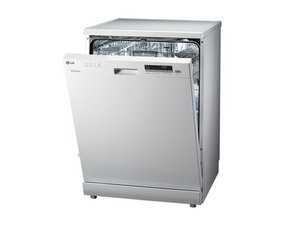


Is your dishwasher not heating up the water? Don’t worry, you’re not alone. Many homeowners find themselves facing this issue at some point. But before you panic and think that it’s time to replace your dishwasher, there are a few things you can check and try to fix the problem.
One of the most common causes for a dishwasher not heating up the water is a faulty heating element. The heating element is responsible for heating the water to the desired temperature during the wash cycle. Over time, these elements can become damaged or malfunctioning, and may need to be replaced. Another reason for the lack of hot water could be a blocked or clogged access to the heating element. It’s important to keep the dishwasher clean and ensure that there are no obstructions preventing the heating element from doing its job effectively.
If you’re not sure how to check the heating element or access it for cleaning or replacement, it’s always recommended to contact a professional dishwasher repair person. They’ll have the necessary knowledge and advice to fix the issue and save you from any further trouble or damage. It’s never a good idea to attempt electrical repairs yourself if you don’t have the expertise or the proper tools. So, if you’re having trouble with your dishwasher not heating up the water, don’t hesitate to seek professional help.
Another related issue that could cause the dishwasher not to heat up the water is a malfunctioning or damaged PCB (printed circuit board). The PCB is responsible for controlling the dishwasher’s various functions, including heating the water. If the PCB is not working correctly, it may need to be replaced to ensure that the dishwasher receives the necessary electrical aid to heat the water effectively.
In conclusion, if your dishwasher is not heating up the water, there could be several causes for this problem. It’s recommended to check the heating element for any visible damage or blockages. If you’re not comfortable doing this yourself, it’s best to contact a professional dishwasher repair person. They’ll have the necessary expertise and tools to diagnose and fix the issue. Whether it’s a faulty heating element or a malfunctioning PCB, getting the dishwasher’s heating system back to working order is essential for effective washing and clean dishes.
The Heating Element Is Faulty

If your dishwasher is not heating up the water, one of the possible causes could be a faulty heating element. The heating element is responsible for heating the water to the required temperature in order to effectively clean your dishes. If it is not functioning properly, it can cause the water to stay cold and your dishes will not be cleaned thoroughly.
To troubleshoot this issue, you can try the following solutions:
- Check the heating element: Locate the heating element in your dishwasher. It is usually located at the bottom of the dishwasher, underneath the lower rack. If you are not confident with electrical repairs, it is recommended to hire a professional contractor or call the manufacturer for assistance.
- Inspect for damage: Look for any visible signs of damage or burn marks on the heating element. If you find any damage, it will need to be replaced.
- Test for continuity: Use a multimeter to test the heating element for continuity. Disconnect the electrical line and remove the heating element from the dishwasher. Test the heating element’s terminals with the multimeter. If there is no continuity, the heating element is faulty and should be replaced.
- Check the wiring: Inspect the wiring connected to the heating element and check for any loose or damaged wires. Repair or replace any faulty wiring.
- Inspect the thermostats: The dishwasher may have thermostats that regulate the temperature. Check these thermostats for continuity and replace any faulty thermostats.
If you are unsure how to handle the repairs or if the above solutions do not solve the issue, it is best to consult a professional contractor or call the manufacturer for further assistance.
Remember, working with electrical components can be dangerous, so always exercise caution and prioritize your safety.
The Thermostat Is Malfunctioning
Another possible reason why your dishwasher is not heating up the water is a malfunctioning thermostat. The thermostat is responsible for controlling the temperature of the water during the washing cycle. If it is faulty, the dishwasher may not be able to heat up the water properly. To fix this issue, you may need to replace the thermostat.
Here are some solutions to consider:
- Check the thermostat connections: Ensure that the thermostat is properly connected to the dishwasher. Sometimes loose or faulty connections can cause heating troubles. If there are loose connections, tighten them or replace the terminals.
- Clean the thermostat: If the thermostat itself is dirty or has built-up debris, it may not function properly. Clean the thermostat to ensure it is free from any blockages or foreign particles.
- Inspect the thermostat for any signs of damage: A defective thermostat can also be the cause of the issue. Carefully examine the thermostat for any visible signs of damage or wear. If it is damaged, it will need to be replaced.
It is important to note that working with electricity can be dangerous. If you are not confident in handling electrical repairs, it is recommended to seek professional help or contact the manufacturer for assistance. They can give you the best advice on how to fix or replace the thermostat.
Remember, not all dishwasher models have accessible thermostats, so it is always a good idea to refer to the owner’s manual or contact the manufacturer for specific troubleshooting steps.
Once you have fixed the thermostat or replaced it, your dishwasher should be able to heat up the water properly again. If the issue persists, there may be other underlying problems with the dishwasher’s heating system.
The Water Inlet Valve Is Defective
If your dishwasher is not heating up the water, one of the potential causes could be a defective water inlet valve. The water inlet valve is responsible for allowing water to flow into the dishwasher during the washing process. If it is not functioning properly, it may not be allowing enough hot water into the dishwasher, resulting in insufficient heating.
One common problem with the water inlet valve is that it can become blocked or clogged with debris over time. This can prevent the water from flowing freely into the dishwasher, causing heating issues. To fix this problem, you can try cleaning the valve to remove any blockages. However, if the valve is severely damaged, it may need to be replaced.
Another possible issue with the water inlet valve is a malfunctioning thermostat. The thermostat controls the temperature of the water that enters the dishwasher. If the thermostat is not working correctly, it may not signal the valve to let in hot water, resulting in lukewarm or cold water during the washing process. In this case, replacing the thermostat should solve the problem.
Wiring or control board problems can also cause issues with the water inlet valve. If the wiring is damaged or the control board is faulty, it may not send the proper signals to the valve, preventing it from opening and allowing hot water into the dishwasher. Checking the wiring connections and replacing any damaged wires or the control board can help resolve these issues.
Accessing the water inlet valve and other components of the dishwasher may require removing the bottom base or front door panel of the appliance. It is important to follow the manufacturer’s instructions or seek professional help if you are not confident in your abilities to make these repairs.
In conclusion, if your dishwasher is not heating up the water, a defective water inlet valve could be the cause of the problem. Checking and cleaning the valve, replacing a faulty thermostat, or resolving any wiring or control board issues are possible fixes for this troublesome issue. Remember to always make sure to unplug the dishwasher and follow safety precautions when working with electrical components. If you are unsure or uncomfortable making these repairs yourself, it is best to contact a professional technician for assistance.
The Control Board Is Damaged

If your dishwasher is not heating up the water, the control board might be damaged. The control board is responsible for regulating the dishwasher’s functions and ensuring that everything operates smoothly. If it is malfunctioning or damaged, it may not be able to properly regulate the water temperature.
One of the most common causes of control board damage is a power surge. Electrical surges can occur when there is a sudden increase in the electrical supply, causing damage to the control board and other components. This can result in a variety of issues, including the dishwasher not heating up the water.
How to Determine If the Control Board Is Damaged

If you suspect that the control board is damaged, there are a few signs to look out for:
- The dishwasher does not heat up the water.
- The water temperature does not change throughout the wash cycle.
- The control panel does not respond when buttons are pressed.
- There is visible damage or burning on the control board.
If you are unsure whether the control board is the issue, it is recommended to consult a professional for an accurate diagnosis.
Steps to Replace the Control Board

If you are comfortable handling dishwasher repairs yourself, you can attempt to replace the control board. However, keep in mind that this repair can be difficult, especially if you have limited experience with electrical components.
Here’s a step-by-step guide to replacing the control board:
- Disconnect the dishwasher from the power supply by unplugging it or turning off the circuit breaker.
- Remove the screws that secure the control panel to the dishwasher door.
- Carefully remove the control panel to gain access to the control board.
- Take note of the wires connected to the control board to ensure they can be reconnected correctly.
- Disconnect the wires from the control board.
- Remove the screws that secure the control board in place.
- Replace the damaged control board with a new one.
- Reconnect the wires to the control board, following the notes you made earlier.
- Secure the control board with the screws.
- Reattach the control panel to the dishwasher door using the appropriate screws.
If you are uncomfortable with handling electrical components or unsure about the repair process, it is recommended to seek assistance from a professional technician. They will have the necessary expertise and tools to handle the replacement safely and ensure your dishwasher is functioning properly again.
Remember, safety should always be the priority when working with electrical appliances. If you are not sure about what you are doing, it is better to seek professional help to avoid any potential risks or further damage.
The Timer Is Broken

If your dishwasher is not heating up the water effectively, one possible reason could be a malfunctioning timer. The timer in your dishwasher controls the various cycles and operations, including the heating element. If the timer is broken or not working properly, it may not be sending the signal to activate the heating element.
To check if the timer is the issue, you can follow these steps:
- Make sure the dishwasher is unplugged or the power supply is turned off.
- Locate the timer, which is usually found in the control panel of the dishwasher.
- Inspect the wiring connections and look for any damage or loose connections. If you notice any issues, you may need to replace the wiring.
- If the wiring appears to be fine, you can try accessing the timer and checking it for any signs of damage or malfunction.
If you are not familiar with how to access the timer or if you find that it is damaged, it is recommended to contact a professional appliance repair service for assistance.
Simple fixes and tips can sometimes solve the problem. Below are a few tips to troubleshoot the timer:
- Ensure that the timer is not blocked or obstructed by any objects.
- Clean the timer components to remove any dirt or debris that may be affecting its functionality.
- Check the timer’s connections to ensure they are secure and free from any corrosion.
If you attempt these fixes and still experience heating issues with your dishwasher, it is advisable to contact a professional technician who specializes in dishwasher repairs. They will have the necessary expertise to diagnose and fix the problem.
Remember, working with electricity and appliance components can be dangerous, so it’s important to take the necessary precautions and seek professional help when required.
FAQ
Why is my dishwasher not heating up the water?
If your dishwasher is not heating up the water, it could be due to a malfunctioning heating element. The heating element is responsible for raising the temperature of the water during the wash cycle. If it is not functioning properly, the water may not heat up as desired.
How can I check if the heating element is the problem?
To check if the heating element is the problem, you can perform a simple test. First, make sure the dishwasher is empty and not running. Then, access the heating element by removing the bottom panel of the dishwasher. Use a multimeter to test the continuity of the heating element. If there is no continuity, it means the heating element is faulty and needs to be replaced.
Can a clogged filter cause the dishwasher water not to heat up?
Yes, a clogged filter can cause the dishwasher water not to heat up. The filter plays a crucial role in the proper functioning of the dishwasher. If it is clogged with debris, it can restrict water flow and affect the heating process. Cleaning the filter regularly can help ensure that the water heats up properly during the wash cycle.
How often should I clean the dishwasher filter?
It is recommended to clean the dishwasher filter at least once a month to prevent clogs and maintain optimal performance. However, if you notice any decrease in water temperature or other issues with the dishwasher, it is a good idea to check and clean the filter more frequently.












